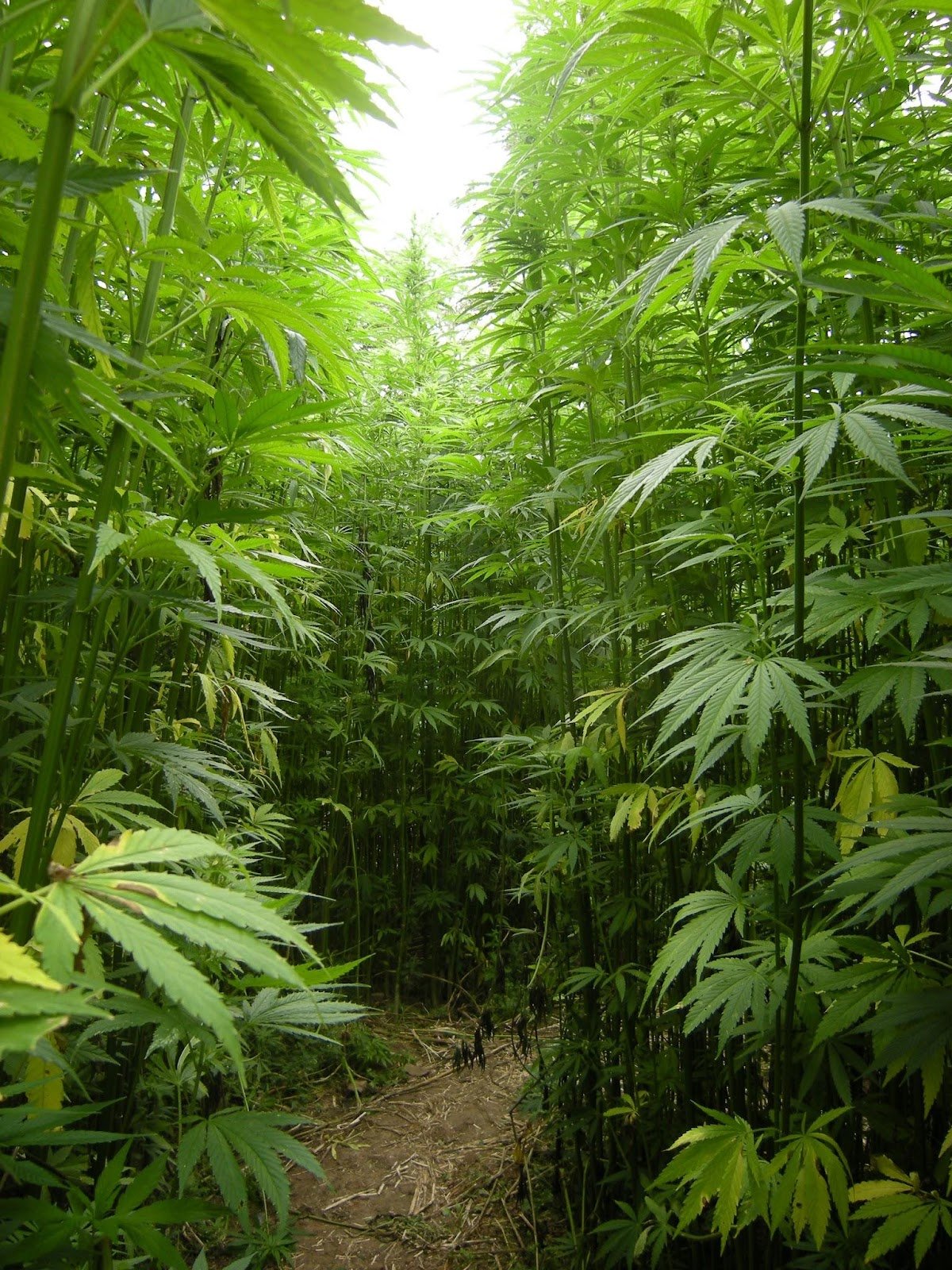25 Brands That Ditched Cotton for Hemp (And Why You Should Too)
Remember the 1970s? A time when cotton was king, synthetic fabrics were the future, and hemp was… well, let’s just say it had an image problem.
And in 2025, something incredible is happening in closets around the world.
Brands are breaking up with cotton. And they’re not looking back.
From Patagonia’s rugged outdoor gear to Levi’s iconic denim, companies are discovering what our great-grandparents knew all along: hemp is a superhero material wrapped in sustainable packaging.
What propelled them? 2,700 liters of water used to make a single cotton t-shirt.
That’s enough drinking water for one person for 2.5 years. Hemp? It uses 75% less water and actually improves the soil it grows in.
Talk about having your cake and eating it too.
Now the fashion industry isn’t exactly famous for quick sustainable changes.
For decades, cotton dominated everything from your favorite jeans to that soft t-shirt you can’t live without. It was comfortable, affordable, and… well, that’s about where the good news ends.
Then came the wake-up call. Water shortages. Pesticide concerns. Soil degradation. Suddenly, cotton’s crown looked a little tarnished.
Smart brands started asking: “What if there’s a better way?”
And that’s where hemp entered the scene, stage left, ready to steal the show.
25 Brands Leading the Charge
Here are the pioneers who saw the future and decided to grab it with both hands.
The Outdoor Legends
1. Patagonia – Iron Forge Hemp Collection
Patagonia’s workwear line features 55% hemp and 18% organic cotton blends that get better with age.
They acknowledged how hemp delivers serious durability, uses minimal water, and actually regenerates soil. Plus, it develops character over time, like a good pair of boots.
2. Kühl – Performance Hemp Gear
Their travel and outdoor clothing incorporates hemp blends that resist mold, wrinkles, and wear.
When you’re climbing mountains or crossing continents, you need gear that works. Hemp delivers performance without compromise.
3. Royal Robbins – Adventure-Ready Hemp
About 30% hemp content in their travel clothing provides natural odor resistance and temperature control. Natural performance beats chemical treatments every single time.
The Denim Revolutionaries
4. Levi’s – Cottonized Hemp Denim
Started with 30% hemp denim in 2019, scaled up to 55% hemp in their WellThread line by 2021.
Hemp uses 4x less water than cotton, resists wear better, and holds up ethically and environmentally. The jeans that built America are building a better future.
5. MUD Jeans – Circular Denim
Their innovative approach combines 30% hemp, 20% recycled denim, and organic cotton in a circular economy model.
MUD Jeans realised why make new when you can directly make better? Hemp fits perfectly into their zero-waste vision.
6. AG – “The Jean of Tomorrow”
Created fully biodegradable denim using a blend of hemp, Tencel and organic cotton.
True sustainability means thinking about the entire lifecycle, not just production.
7. Hemp Blue – High-Hemp Denim
Their jeans pack serious hemp content while maintaining the comfort and style denim lovers expect.
Strong, breathable, biodegradable, and straight A’s in the looks department too.
The Streetwear Pioneers
8. Jungmaven – 100% Hemp Basics
Evolved from hemp-cotton hybrids to 100% hemp tees, hoodies, and essentials.
Hemp doesn’t stretch out, resists odors, and simply outlasts everything else. When you find perfection, why compromise?
9. Afends – Australian Hemp Streetwear
Hemp tees and boardshorts with 40-50% hemp content, perfect for UV protection and durability.
Australian sun is no joke. Hemp provides natural UV resistance while keeping things breathable.
10. THTC (The Hemp Trading Company)
UK streetwear that quickly adopted hemp and bamboo blends after starting with cotton.
Hemp aligns with their values, and their customers noticed the difference immediately.
11. Tentree – Regenerative Hemp Fashion
Combines hemp, organic cotton, and Tencel in pieces with 50-60% hemp content.
Hemp perfectly aligns with their tree-planting mission and regenerative philosophy.
12. Toad&Co – Active Lifestyle Hemp
Uses 80% organic cotton + 20% hemp blends, with higher hemp percentages in outerwear.
Fair trade supply chains, odor resistance, and clothes that actually last.
13. Mara Hoffman – Sustainable Swim
Their Project Conscious line features hemp blends in swimwear and resort wear.
And once again, hemp proves that sustainability doesn’t mean sacrificing style.
14. Rawganique – 100% Organic Hemp
Transitioned from cotton to 100% organic hemp across tees, sweaters, and home goods.
Chemical-free, earth-first clothing that lives up to their raw, authentic brand ethos.
15. Nomads Hempwear – Canadian Hemp Basics
Hemp blended with GOTS-certified cotton for everyday essentials. Earth-friendly sourcing meets urban design for the conscious wardrobe.
16. Circle Creations – Ethical Hemp Staples
Blends hemp with Tencel and organic cotton in ethically made capsule basics.
Traceable, plant-based fabrics with minimal environmental impact.
17. WAMA Underwear – Soft Hemp Intimates
Hemp underwear and basics blending hemp with organic cotton and minimal elastane.
Breathable, odor-resistant, biodegradable comfort where you need it most.
18. Coyuchi – Hemp Home & Apparel
Hemp-blend towels, loungewear, and bedding sourced in the USA.
Local production, lighter environmental footprint, and that perfect balance of durability and softness.
19. Slvrlake – Premium Hemp Denim
Hemp-cotton denim blends in soft washes for sustainable luxury streetwear. Hemp denim represents the future of conscious luxury fashion.
20. Ecofibre – Textile Producer
Supplies hemp textiles to fashion brands while converting cotton mills to hemp processing. Vertical integration meets growing global demand for hemp fabric.
21. Goddess Gear – Performance Hemp
Integrated hemp fabric into formerly cotton-exclusive performance ranges.
Retailers want sustainable differentiation with zero performance compromise.
22. Sweet Skins – Hemp Comfort
Shifted from cotton basics to hemp-rich collections for better durability and feel.
Hemp’s natural properties create better products, period.
23. Hemp Fortex – Industrial Hemp Fashion
Focuses on hemp’s industrial strength translated into everyday wear. Their philosophy is simple: why use weak materials when you can use the strongest natural fiber on Earth?
24. Bleed Clothing – Sustainable Streetwear
German brand that moved from cotton basics to hemp-rich collections.
Lower environmental impact, higher ethics, completely transparent supply chains.
25. The Hemp-First Generation
Dozens of direct-to-consumer brands launched in 2024-25 as hemp-first companies, bypassing cotton entirely.
But this brand didn’t switch. They simply started smart. Hemp’s regenerative story, clean luxury appeal, and rising consumer demand made the choice obvious.
Why This Revolution Matters (And Why You Should Join)
Water Wars? Hemp Wins
Hemp uses 75% less water than cotton and requires zero pesticides. In a world facing water scarcity, that’s not just smart, it’s essential.
Strength That Pays Off
Hemp fiber is four times stronger than cotton. Your clothes last longer, resist pilling, and maintain their shape through countless washes.
That favorite t-shirt that goes shapeless after three months? Hemp doesn’t know her.
Climate Hero Status
Hemp does more than avoid environmental damage, it actively helps. Hemp plants sequester carbon, rebuild soil health, and fit perfectly into regenerative farming cycles.
Comfort Without Compromise
Modern hemp processing creates fabric that’s soft from day one. Add in natural breathability, antimicrobial properties, and UV resistance, and you’ve got textile perfection.
The Trust Factor
Today’s consumer journey doesn’t only end at buying products, they buy values. Hemp gives brands story, substance, and transparency. No greenwashing required.
The Hemp Shopping Decoder
Want to join the revolution but feeling overwhelmed? Here’s your insider’s guide to making smart hemp purchases.
The Touch Test: Visit a store and feel hemp fabric yourself. Modern hemp processing has eliminated that rough, scratchy stereotype. Today’s hemp feels like premium cotton’s cooler, more confident cousin.
The Blend Sweet Spot: Look for 30-55% hemp content in blends. This gives you hemp’s superpowers (durability, moisture-wicking, odor resistance) while maintaining familiar comfort levels.
The Price Reality Check: Yes, hemp costs slightly more upfront. But here’s the math that matters: a single hemp t-shirt that lasts 5 years beats five cotton shirts that lose their shape after six months.
The Brand Investigation: Check if companies share their hemp sourcing stories. Transparent brands usually have better products and stronger sustainability commitments.
What Hemp Can’t Do (Yet)
But if we’re being honest, hemp isn’t perfect for everything.
Super stretchy activewear? Cotton-poly blends still have an edge. Ultra-soft baby clothes? Organic cotton might be gentler for sensitive skin.
The key is strategic switching, not wholesale replacement.
The Economics Behind the Revolution
Here’s what’s really driving this shift and it’s not just environmental guilt.
Farmers are waking up. Hemp yields more fiber per acre than cotton while requiring fewer resources. That’s profitability with purpose.
Textile mills are adapting. Modern hemp processing equipment can handle cotton-hemp blends without major retooling. Smart investment, not complete overhaul.
Consumers are paying attention. Premium prices for sustainable products are becoming standard market expectations.
The Gamechangers From Day One
Remember how we started this story talking about brands switching from cotton to hemp?
Here’s where it gets interesting. The most successful hemp brands never made that switch at all.
Companies like Jungmaven and Rawganique started hemp-first and built their entire identity around it. They didn’t have to overcome cotton habits or retrain supply chains.
They just focused on making incredible hemp products from day one.
This suggests something profound: the future belongs to hemp-native brands, not cotton converts.
Your Next Move
Forget about revolutionizing your entire wardrobe overnight.
Instead, try this: Next time you need to replace something – a worn-out shirt, faded jeans, tired workout gear – make hemp your first choice.
Don’t force it. Don’t stress about perfection. Just redirect your natural shopping habits toward better materials.
That worn-out cotton hoodie you’ve been meaning to replace? Perfect hemp opportunity.
Those jeans with the blown-out knee? Hemp denim time.
The gym shirt that’s acquired mysterious permanent odors? Hemp’s antimicrobial properties are calling your name.
One replacement at a time, you’re improving your wardrobe + proving market demand for sustainable alternatives.
The Future Writes Itself
While we’ve been talking about 25 brands that made the switch, hundreds more are watching, waiting, and planning their own hemp strategies.
The textile industry moves slowly until it doesn’t. Then change happens everywhere at once.
We’re approaching that tipping point where hemp stops being alternative and starts being obvious.
When that moment arrives—and it’s coming faster than most people realize—you’ll already be ahead of the curve.
Not because you chased a trend, but because you recognized quality when you saw it.
The hemp revolution doesn’t need your permission to succeed. But it could definitely use your participation.
Sources
https://www.levistrauss.com/2019/03/11/new-levis-wellthread-x-outerknown-features-groundbreaking-cottonized-hemp/
https://www.levistrauss.com/2021/03/17/levis-wellthread-a-laboratory-for-progress/
https://www.patagonia.com/our-footprint/hemp.html
https://fabricmaterialguide.com/hemp-fabric/hemp-and-water-usage-comparing-it-to-other-fabrics/
https://retail.economictimes.indiatimes.com/news/apparel-fashion/apparel/hemp-made-apparel-has-3-times-tensile-strength-of-cotton/44802090
https://time.com/6268420/hemp-climate-solution/
https://hempco.net.au/comparing-natural-fabrics-hemp-vs-cotton/blog?srsltid=AfmBOopiOJzzxQGHgpZoI2HtCk1l4QJGCcGiUZv8-XY_M28ByX1-3Y_x
https://www.sarkengg.in/post/comparative-study-water-footprint-of-cotton-vs-hemp-and-bamboo-in-technical-applications
https://heartland.io/hu/sustainability-news/hemp-fiber-requires-less-water-than-cotton-to-farm/
https://heartland.io/sustainability-news/farmers-are-reducing-water-usage-by-adopting-hemp-fiber-and-grain-crops/
https://jungmaven.com/collections/100-hemp?srsltid=AfmBOoqJkArEUL6Dcm1kXheKDBwSMVpJ2k3_odNU7i6iJYWBNgamav6j
https://www.tentree.com/pages/sustainability-report
https://www.toadandco.com/pages/taj-hemp?srsltid=AfmBOooKElfBLHQ8lRM1wquHwYdO3H7Sr38NXB2m7KVE_mOkbskyfi6x




